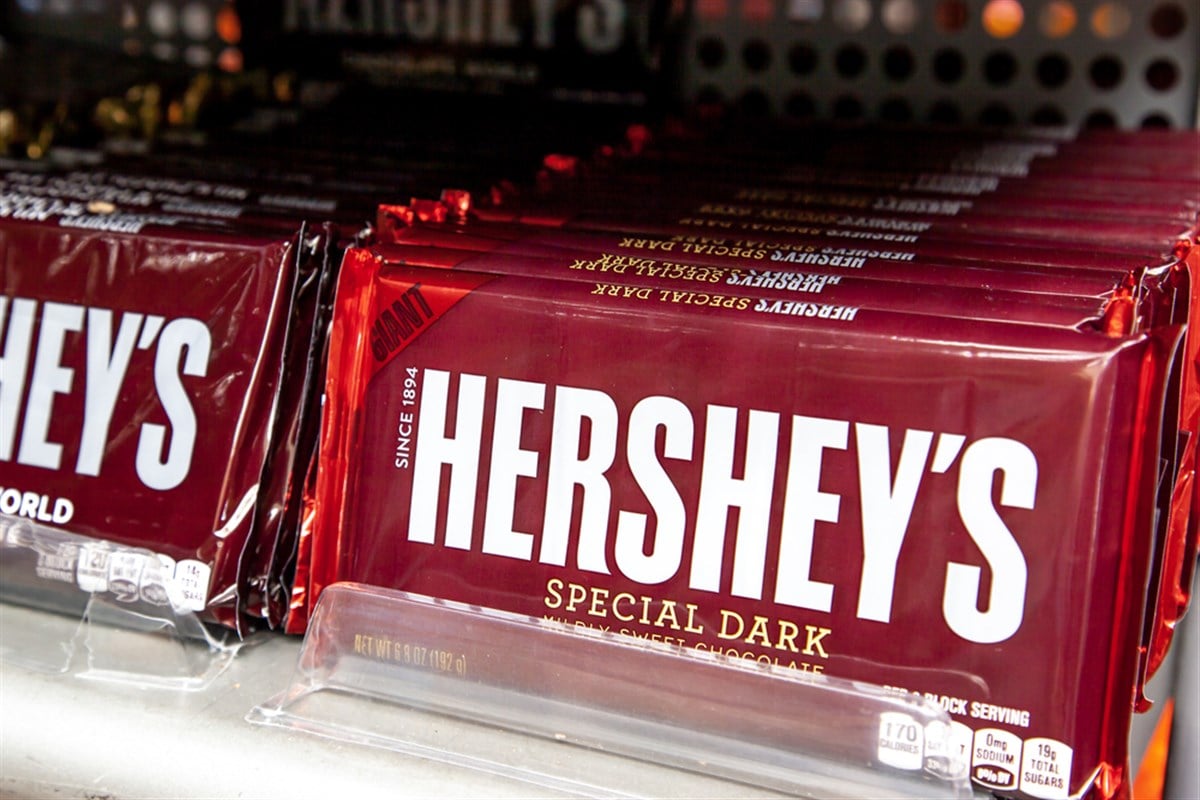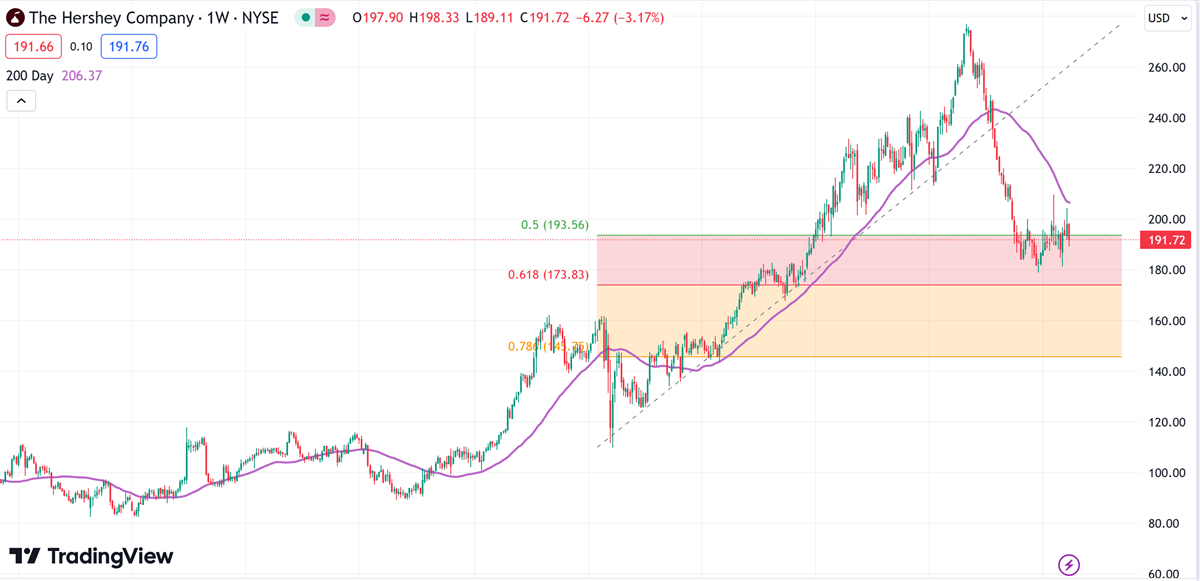
Value stocks are backed by impeccable businesses expected to pump out profits at high margins. The company's quality is only the start of the equation because investors also need to justify the purchase at a good enough price.
Overpaying for a good thing is still overpaying, so The Hershey Co. (NYSE: HSY) can be the perfect place to look for a value play. After declining by as much as 35% from its all-time high price of $276 a share, Hershey's stock is now consolidating around a price investors may want to pay attention to.
Some institutions on Wall Street took notice of this discount, which came to be attractive enough to buy. A very specific – and cyclical – reason for this dip may be cleared away soon, opening the way for broader markets to become bullish on the stock and return it to its former glory.
It’s Only a Bump in the Road
Cocoa prices have hit an all-time high this year, more than doubling in the past quarter alone. Considering that Hershey is in the chocolate business – as its major source of revenue -higher input costs may have scared off some investors in the market.
However, this is where the quality factor comes into play in this value play. Hershey’s financials show that the company consistently maintains gross margins of 43% to 45%, which only dipped to 42% during the quarter when Cocoa rose to all-time highs.
Bears expect these costs to hit the company’s pricing power and brand penetration and are set up for a reckoning. Cocoa prices can’t stay this high much longer, as commodities are cyclical; this bump in the road could be no more and bring the stock back on better sentiment.
Bulletproof Profits
Hershey can be considered part of consumer staples stocks, characterized by their immunity to the business cycle. Other stocks in the Consumer Staples Select Sector SPDR Fund (NYSEARCA: XLP) can include Ulta Beauty Inc. (NASDAQ: ULTA) since consumers will likely keep buying makeup and skincare products whether the economy is booming or busting.
The same could be said about Hershey since it also operates in other snacks like SkinnyPop. Even if chocolate goes out of fashion (unlikely), Hershey is set up to keep profits churning. A few metrics can determine the reliability of these profits.
Return on invested capital (ROIC) can be a proxy for financial strength and management’s ability to reinvest shareholder money responsibly. Over the past five years, Hershey delivered an average ROIC of 17% because, over the long term, stock prices tend to compound at the same rate as ROIC.
More than that, the company's $39 billion size allows it to carry a reasonable amount of cheap debt. Making up 55% of the company's total capitalization, Hershey's debt also enables the stock to remain detached from the interest rate cycle.
Part of the low-beta stocks group, Hershey’s 0.34 beta makes it the sort of stock that pension funds and other asset managers hunt for. In fact, the Vanguard Group increased its exposure to the stock by 1.8% in the past quarter, representing a transaction of roughly $51 million.
Technicals Give More Insight
Hershey stock has now retraced more than 50% from its all-time high price, making it an attractive proposition for investors hunting for high returns at a discount.
Despite the contracted stock price, markets are still willing to value this company as its value moat. Compared to other peers in the sector, like US Foods Holding Corp. (NYSE: USFD), Hershey shows a few outlying features that make it a more attractive choice.
On a forward price-to-earnings (forward P/E) basis, Hershey trades at a 19.1x multiple, a 29% premium to US Foods’ 14.8x valuation. The market must have a good reason to overpay for Hershey's stock in a competition for two consumer staple stocks.
There’s also a third, Campbell Soup (NYSE: CPB), below Hershey. In its 13.4x forward P/E valuation, Campbell gives Hershey a 42% premium valuation.
Knowing that cocoa prices are set to revert in the next cycle, markets could be gearing up for an earnings beat in May 2024. More than a potential earnings beat, markets could be looking for increased guidance from management now that margins could rise on normalized cocoa prices.





